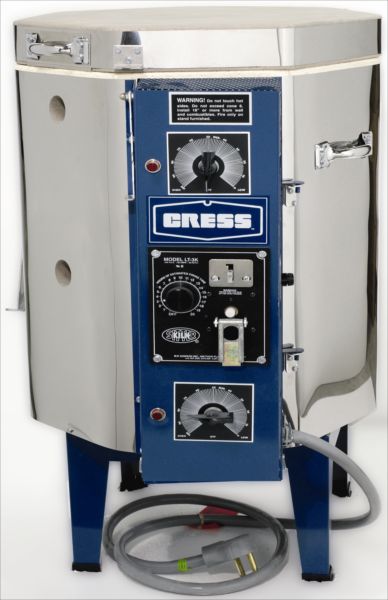
Selecting the wrong shelves can be more costly than you need or cutting corners can end up with ruined shelves. Selecting the proper kiln shelves for your firing application important. Not preheating the controller might bind the relays contacts, thus, overheating your kiln or keeping one of the elements turned on after the kiln automatically turned off. Your kiln will have to work a little longer to get to temperature. It is, but Skutt in particular recommends warming the controller (if you have one) to at least 40 degrees F with a space heater or hair dryer. Some people wonder if it is ok to fire a kiln in cold weather. You will learn whether you need to make adjustments to achieve the desired cone. So it is still important to monitor your firings at least periodically by using witness cones inside the kiln until you trust the performance of the kiln. To determine when to turn the kiln off, the controller uses temperature charts to approximate when the appropriate heat work is done (a certain cone level is reached.) This can vary somewhat based on things such as the density of the load being fired. The pre-programmed modes automatically turn the kiln up when it is safe to fire the pieces quickly, and down when the clay is at a point where it should be fired slowly. You can use a pre-programmed Cone Fire mode, or program your own individual segments. It can even be used to do a controlled cool down. * A little kiln wash dabbed on the top of new cone support greatly reduces the chance of a cone sticking to the new metal (which may cause your kiln to over or under fire)Īn electronic controller turns up the kiln, and also turns off the kiln. * Note that a kiln sitter does not assist in turning up the kiln, just in turning it off. You will need to experiment with this for your individual kiln.

For example, to achieve a cone 6 inside the kiln, they must use a cone 7 in the kiln sitter. * People often find that they need to put a slightly higher cone number in the kiln sitter to get the kiln to fire to the correct temperature. * Kiln sitters can drift and need to be calibrated periodically (more about this later). * Since a kiln sitter works by gravity, it is important for the kiln to be level.

The rod activates the control mechanism which turns off the current to the coils.

When the cone bends (because it has absorbed the correct amount of heat), the rod falls. The cone is held by a retaining bar and a moving rod. In order to address these different firing types, we will quickly review how a kiln sitter works, and how an electronic controller works.Ī kiln sitter works as follows: A junior or small cone of the appropriate cone number is set inside the kiln sitter box. ELECTRONIC CONTROLLER: By programming an electronic controller to turn the kiln on and off when appropriate. MANUALLY turning the kiln on and off based on how the witness cones behave in the kiln (watching the cones inside the kiln through the kiln's peephole).ģ. Comes with manual, 8 shelves 10 bats, many spacers, pyrometric cones, and vari. Exterior and interior in good condition, all electric elements intact with no damage. Has been in storage, very well taken care of. Selling a Skutt KS 1027 Kiln Model LT-3K Electric Kiln and accessories in good condition. Skutt KS 1027 Kiln Model LT-3K Electric Kiln and accessories - $450 (Sherburne).cress large electric kiln fx-27 p w/lt-3k kiln sitter - $250 (Lake Havasu City)Īwesome Electric Kiln.With table stand.located in Havasu.One Cress electric kiln in excellent condition. Cress LT-3K electric kiln - $550 (Des Moines).I bought this used from a glass artist but have outgrown it before I used it.

Includes all seen in the pictures- you will be ready to go when you are home.


 0 kommentar(er)
0 kommentar(er)
